No one can keep up with everything, so let us do it for you. We’ll gather the top Smithsonian stories from across the country and around the world each week so you’ll never be at a loss for conversation around the water cooler.
This week we were all about women–from the ongoing struggle for suffrage and representation to groundbreaking celebrities and First Ladies. We also outed a geothermal plant pretending to be a volcano–can’t slip anything past us!

Art and Design
The portrait’s photographer, Tyler Mitchell, first broke the news of the acquisition
Essence, August 10
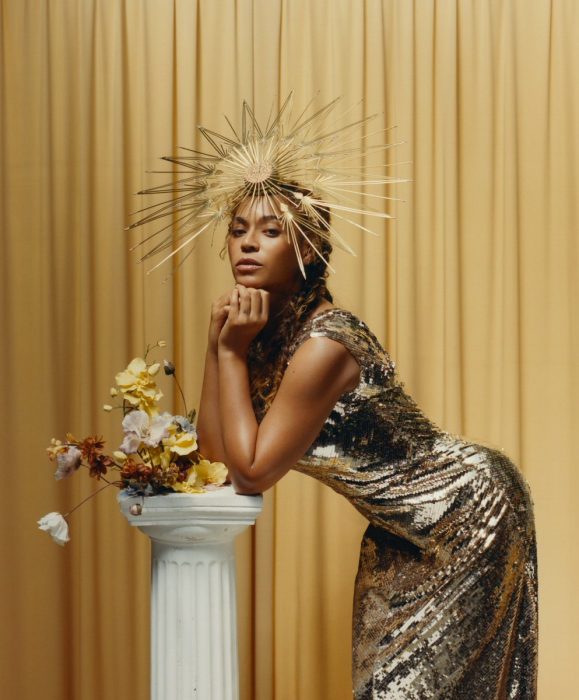
Photo by Tyler Mitchell
The Smithsonian’s National Portrait Gallery has announced that it is acquiring a Beyoncé portrait for its collection.
The museum is buying the portrait of the “Spirit” singer, featured in the iconic September 2018 edition of Vogue Magazine, with plans for it to eventually go on display.
The portrait’s photographer, Tyler Mitchell, first broke the news in a tweet on Tuesday. With that Vogue cover shoot, Mitchell also made history as the first Black photographer to ever shoot an American Vogue cover. Read more from Essence.
The Washington Post, August 13
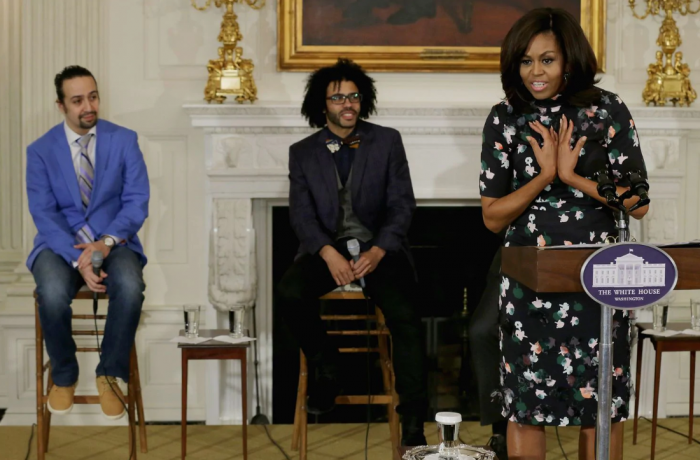
First lady Michelle Obama welcomes the Broadway cast of “Hamilton,” including Lin-Manuel Miranda, left, and Daveed Diggs, to the White House in March 2016. (Chip Somodevilla/Getty Images)
The stars have aligned for the National Portrait Gallery’s gala this fall: Michelle Obama (whose portrait broke visitor records at the gallery) will be on hand to honor “Hamilton” creator Lin-Manuel Miranda; “Late Late Show” host James Corden will pay tribute to Vogue editor Anna Wintour; Clive Davis will present an award to the members of Earth, Wind & Fire, and CBS journalist Gayle King will serve as emcee. Read more from the Washington Post.
The Washington Post, August 14
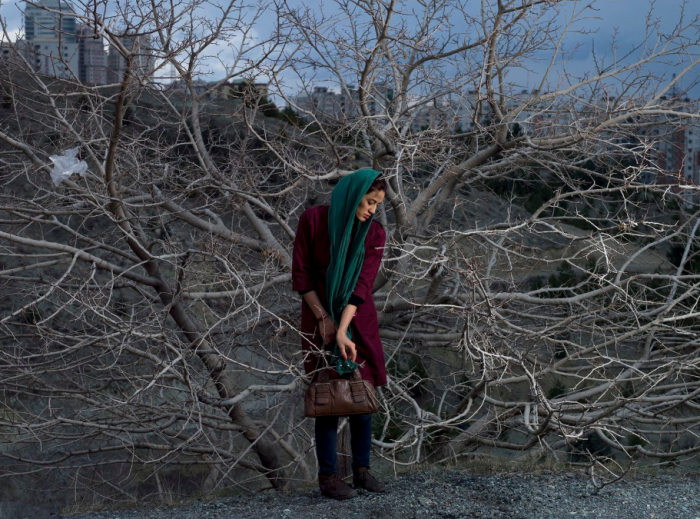
“Somayeh,” from “Blank Pages of an Iranian Photo Album” by Newsha Tavakolian. (Newsha Tavakolian/Freer Gallery of Art and Arthur M. Sackler Gallery)
Forty years after the Iranian Revolution, U.S. media coverage of Iran is still so overwhelmingly focused on the country’s fraught relationship with the United States that certain images have become tropes. Stock photographs of chador-clad women; shown in profile, their faces almost invisible as they walk past anti-American street murals, are published with ludicrous frequency.
A new exhibition at the Arthur M. Sackler Gallery, “My Iran: Six Women Photographers,” aims to challenge the stereotype of voiceless Iranian women, presenting a more nuanced view of the country through the work of some of its most talented contemporary photographers. Read more from the Washington Post.
Culture Type, August 11

“Liberal Women Protest March I” (1995) by Nike Davies-Okundaye of Nigeria
THE NATIONAL MUSEUM OF AFRICAN ART is celebrating women artists. Over the past five years, the Smithsonian museum has doubled its holdings of art by women. Showcasing some of the recent acquisitions, “I Am… Contemporary Women Artists of Africa,” opened in June. The exhibition includes works by Njideka Akunyili Crosby, Sokari Douglas Camp, Nike Davies-Okundaye, Zanele Muholi, Toyin Ojih Odutola, Wangechi and Billie Zangewa, among others. Drawn from the museum’s permanent collection, the show features 30 works by 28 modern and contemporary women artists, spanning three generations.
A range of mediums are on view, from paintings, sculpture, video and installations, to ceramics, textiles, and fashion. While the artists hail from 10 countries, more than half of them were born or are based in Nigeria and South Africa. Read more from Culture Type.
The DCist, August 13
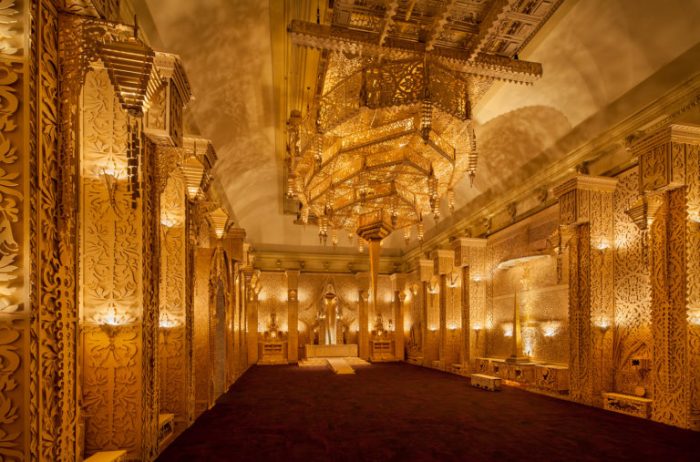
David Best’s temple was installed at the Renwick as part of its “No Spectators: The Art of Burning Man” exhibition. It will remain open until January 5, 2020.
Courtesy of the Renwick Gallery / Ron Blunt
Tens of thousands of wooden squares—inscribed with expressions of loss, sorrow, memory, hope—are making their way from the District to Burning Man, and they aren’t just metaphorically heavy. The collection weighs nearly a ton.
The tablets are en route to Black Rock City from the Renwick Gallery, which hosted an immersive exhibit about the festival last year. The centerpiece of No Spectators: The Art of Burning Man was an elaborate, absorbing room by artist David Best that seemed to glow from within the heart of the museum’s Grand Salon. While the larger exhibition closed in January of 2019, the work, called Temple, remains up through January 5, 2020. Read more from DCist.
History, Culture, and Education
The disappearance of Amelia Earhart – and the theories about what happened to her – have captured imaginations for decades.
BBC News, August 10

Amelia Earhart: A legend in her day, and a mystery ever since (Getty Images)
In 1937, American aviator Earhart vanished during her attempt to fly around the globe, leaving no trace.
Now, a new expedition has set off for Nikumaroro, a tiny atoll in the Pacific, seeking to find her plane and possibly her remains.
And it’s headed by another legend – the man who found the wreck of the Titanic, Robert Ballard.
Can he succeed where so many have failed?
While Mr Ballard radiates optimism, many Earhart experts are doubtful he will be able to uncover what happened to her. Read more from BBC News.
The Complex History of the Women’s Suffrage Movement
As the 19th Amendment turns 100, three exhibitions in Washington explore the contentious–and unfinished–struggle for voting rights.
The New York Times, August 15
In the summer of 1919, shortly after Congress passed the 19th Amendment, the Smithsonian acquired a few relics from the nearly century-long struggle for women’s suffrage.
Susan B. Anthony’s red silk shawl and the table on which Elizabeth Cady Stanton had drafted the Declaration of Sentiments in 1848 were among the donated items. A year later, after the amendment was ratified by the states and became part of the Constitution, they were put on view along with some documents, teacups, brooches and other objects in a modest display bearing the offhand title “An Important Epoch in American History.” Read the full article. The Complex History of the Womens Suffrage Movement – The New York Times – 8.15.19
Science and Technology
The illegal trade in Asian elephant skins—for jewelry and traditional medicine—has expanded across Southeast Asia.
National Geographic, August 12

The illegal trade in elephant skins for decorative beads and medicinal powders has spread rapidly since the commercial trade was first described by researchers last year.
PHOTOGRAPH BY STEVE WINTER, NAT GEO IMAGE COLLECTION
It was the smell that put off the men and women charged with converting the subcutaneous fat from freshly slaughtered elephants into ruby red beads. It was noxious. Acrid. The fumes were stomach-churning as the workers in China spent hours curing then polishing translucent beads of fat that often didn’t retain their shape.
One trader told investigators with Elephant Family, a conservation watchdog based in London, England, that it took him an entire day to produce one bead. Read more from National Geographic.
“There’s just no evidence we can see that this was ever a volcano.”
The Atlantic, August 13
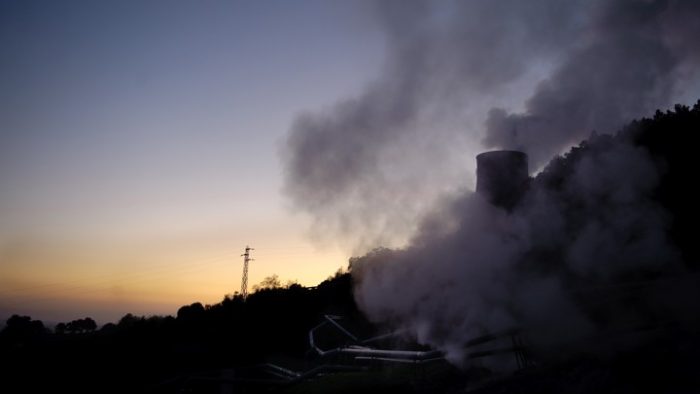
Steam rises from a chimney of a geothermal power plant in Larderello, in the Italian region of Toscana on November 25, 2009. Larderello, using the power of “soffioni” (steam geysers) produces ten percent of the world’s entire supply of geothermal electricity. AFP PHOTO / VINCENZO PINTO TO GO WITH AFP STORY BY FRANCOISE KADRI (Photo credit should read VINCENZO PINTO/AFP/Getty Images)
Janine Krippner was the first to notice something amiss with the volcano.
A volcanologist at the Smithsonian Institution’s Global Volcanism Program, Krippner was doing a routine fact-check in the program’s volcano registry, scrolling through photos of all kinds of volcanoes—from sleeping geological giants to actively raging mountains—while checking the accuracy of their captions. When she stumbled across the page for Larderello, a volcano in Italy’s picturesque Tuscany region, she was naturally expecting to see a volcano. Instead, she was presented with a bizarre shot of several industrial cooling towers associated with a geothermal power plant. Read more from The Atlantic.
Radioastronomers look to hydrogen for insights into the Universe’s first billion years.
Nature, August 14

A night view of part of the Murchison Widefield Array in Western Australia. Credit: Dr John Goldsmith/Celestial Visions
To get an idea of what the Universe looks like from Earth’s perspective, picture a big watermelon. Our Galaxy, the Milky Way, is one of the seeds, at the centre of the fruit. The space around it, the pink flesh, is sprinkled with countless other seeds. Those are also galaxies that we — living inside that central seed — can observe through our telescopes.
Because light travels at a finite speed, we see other galaxies as they were in the past. The seeds farthest from the centre of the watermelon are the earliest galaxies seen so far, dating back to a time when the Universe was just one-thirtieth of its current age of 13.8 billion years. Beyond those, at the thin, green outer layer of the watermelon skin, lies something primeval from before the time of stars. This layer represents the Universe when it was a mere 380,000 years old, and still a warm, glowing soup of subatomic particles. We know about that period because its light still ripples through space — although it has stretched so much over the eons that it now exists as a faint glow of microwave radiation. Read more from Nature.
WTOP, August 15
Bei Bei is about to turn four, and that means it’s almost time to say goodbye.
The giant panda will celebrate its birthday on Aug. 22 at D.C.’s National Zoo, the only home he’s known since he was born there in 2015 to Mei Xiang and Tian Tian by artificial insemination. But as every parent knows, one day their children will leave home and venture out into the world.
Bei Bei is set to move to China, according to a breeding agreement between the U.S. and China. The zoo is working with other federal agencies and their Chinese counterparts to research logistics and prepare Bei Bei for the big move. There is no exact date, but the National Zoo said in a release that it will happen in the coming months. Read more from WTOP.
‘David H. Koch Hall of Fossils’ Review: A Too Shallow Treatment of Deep Time
The newly renovated display at the Smithsonian National Museum of Natural History is filled with fascinating dinosaurs, but the story it tells is confusing and unfocused.
The Wall Street Journal, August 13
What do we want from dinosaurs and other fossilized bones? Perhaps too much. Thomas Jefferson displayed remnants of an American mastodon in the White House as if offering a primal foundation for the new nation. Andrew Carnegie sponsored excavations that led to the discovery (and naming) of the Diplodocus carnegii–a monument to his reach. Dinosaurs were Darwinian masters of the Mesozoic era for some 160 million years and looked the part; their bones still seem repositories of power. Read the entire article.David H. Koch Hall of Fossils Review_ A Too Shallow Treatment of Deep Time – WSJ – 8.13.19
Various
The Washington Post, August 9

Said Kumbi-a-Wadesa, a chairman of Pokomo Council of Elders: “If the ngadji in London is really ours, I will know from the sound it makes when it is played in front of me.” Photo by Luis Tato for the Washington Post)
he men and women, some claiming to be nearly 100 years old, gathered in a small courtyard to sing a hymn passed down to them by their forebears.
“Oh, holy vibration,” the call to prayer began, sung as loudly as their lungs allowed. The air hummed with the sound of their voices, but something essential was missing — the source of the holy vibration, the centerpiece of their ancestors’ religion. Read more from the Washington Post.
Museum trustees and administrators are debating the new rules of ethical philanthropy.
ArtNet, August 13

NEW YORK, NEW YORK – MAY 17: Political activists gather for the ninth week in a row outside of the Whitney Museum to demand that the museum’s board dismiss Warren Kanders, a wealthy businessman who has made a fortune selling tear gear to the NYPD and the Israeli army, on May 17, 2019 in New York City. (Photo by Andrew Lichtenstein/Corbis via Getty Images)
Activists and artists have been pushing out what they consider “toxic” museum philanthropists at an unprecedented pace in recent months. In a spectacular development, in late July, Warren Kanders, whose company Safariland manufactures tear gas, resigned from his position as vice chair of the Whitney Museum’s board after eight artists threatened to withdraw their work from the current biennial in protest of his presence. Meanwhile, museums around the world have started rejecting funding from the Sackler family, which manufactured and aggressively marketed the addictive painkiller OxyContin.
Now many activists and philanthropists alike are wondering, what’s next? Read more from ArtNet.
Observer, August 14
Over the past year, museums, and more specifically the people who serve on their boards, have come under unprecedented backlash for the incoherence between the values they represent and the institutions they are supposed to serve. Protests over the ethical impropriety of the investment boards of the Whitney Museum of American Art—most notably the involvement of Warren B. Kanders with the institution—as well as Museum of Modern Art in New York and the San Francisco Museum of Modern Art have called into question the prioritization of wealth over all other criteria when it comes to museums receiving funding.Read more from the Observer.
The attraction for youngsters is making its way back to the District. We chatted with president and CEO Crystal Bowyer about what visitors can expect.
Northern Virginia, August 14
On Nov. 1, the National Children’s Museum will reopen at a new location, bringing a cornerstone the region’s kids a STEM-focused museum for the first time since the original site, Capital Children’s Museum, closed 16 years ago. Before the doors open, we spoke with museum CEO and President Crystal Bowyer about creating the kid-focused concept in an era driven by technology.
The museum is being billed as celebrating “modern childhood.” What does that mean?
I think that for today’s child, what they expect from a children’s museum is very different from what you and I expected at a children’s museum. They want to see things that they cannot see at home. So, if you take them into a traditional children’s museum and they are seeing the same grocery store with plastic food and items that they might actually play with at home, it’s not as engaging of an experience. We have this rule of thumb that anything that’s in the museum would not be something that you would expect to have at home. We are trying to spark imagination, spark curiosity and really inspire the children through the experience. Read more from Northern Virginia.
Posted: 21 August 2019


















